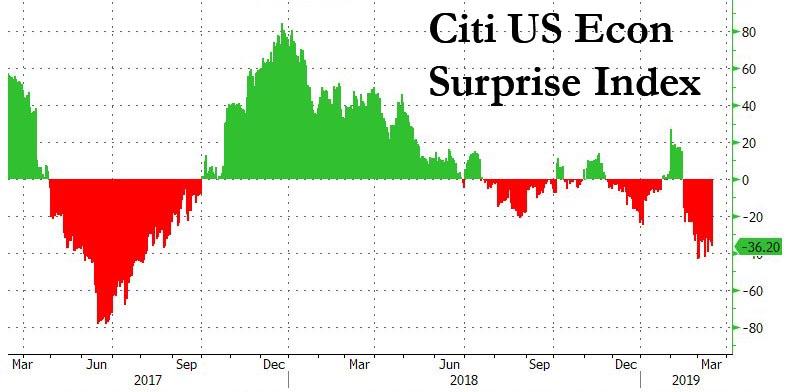Authored by BMO Rates analysts Ian Lyngen and Jon Hill
In the week ahead, the FOMC Meeting is the clear focal event as it’s inevitable that this will be a pivotal gathering for policymakers. The market stasis has occurred during a period of policy limbo, where the key question is how low will the dots go. Our expectations are for a lowering of the forecasted path of policy to reflect the diminished growth and inflation outlooks, although our sense is that it will be difficult for the median 2019 dot to fall all the way to zero implied hikes. This will come in contrast to fed funds futures which are pricing in a very low probability of any rate hike, and in fact, an element of easing by 2020. The other obvious question is going to be what guidance Powell provides on the end of balance sheet runoff. At this point, it’s very consensus that the process terminates at some point in 2019, but details such as timing and mechanics remain vague.
In order for the recent economic stumbles to give way to a continued expansion we think that the communication on both rates and balance sheet will need to be far more about the Fed’s willingness to be accommodative when needed. To be fair, that’s really this moment’s biggest question – whether or not the Fed shifted to an on hold stance of policy quickly enough to avert a more material slowdown. Given the way that GDP appears to be shaping up for Q1, it’s not entirely clear as of yet that they have been successful, though additional data going into Q2 will be required to confirm or deny this thesis. While it’s unclear if the Fed is able/willing to deliver a more dovish statement/dot plot than the market is expecting, the obvious risk is that they out dove the doves, as it were. Moreover, too accommodative of communication runs the risk of undesirable implications as investors would begin to wonder ‘what does the Fed know?’ about a potential impending global synchronized downturn.
We’ve been asked several times recently what the next big trade is in the Treasury market, and still see 10-year yields ending the year somewhere in the 2.50% to 2.75% range. We’ll be the first to admit that cyclical resteepening of the curve is really not that exciting, so will also offer that there remains a significant subset of the market looking for another buying opportunity in the front-end, though a push back to that 2.60% to 2.70% range in 2s would be predicated on some more hawkish rhetoric. Is that this week’s story? It seems unlikely that Powell will try to jawbone the market pricing toward an upward sloping fed funds futures curve, at least not just yet.
We have also been struggling with the question of how long risk assets can continue to perform so well. The rally to start the year is a function of the shift in Fed policy, i.e. not data which continues to come in below expectations (the economic surprise index remains near 12 month lows).
Moreover, we remain leery of the corporate sector as a result of the shape of the curve. Although the flattening really occurred last year, the implications of the move come with a 12 to 18 month lag, so this will be the year in which profit compression will become far more thematic. We’ve already seen some of this begin to occur, and it’s the extent to which that trend is going to extend that leaves us more cautious of risk assets.
via ZeroHedge News https://ift.tt/2HlAl2V Tyler Durden
